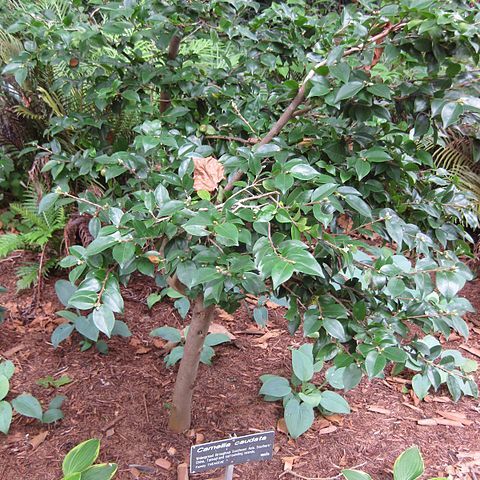Shrubs or trees, 2-8 m tall. Young branches grayish brown; year-old branchlets straw colored, glabrous; current year branchlets pubescent and villous. Petiole 3-7 mm, villous or pubescent; leaf blade elliptic, oblong-elliptic, oblong, lanceolate, or narrowly lanceolate, 3.5-12 × 0.8-4(-5) cm, papery or thinly leathery, abaxially pale green, sparsely appressed pubescent but densely villous along midvein when young, soon glabrescent except along midvein, and becoming grayish white when dry, adaxially dark green, shiny, and hirtellous along midvein, secondary veins 8-10 on each side of midvein, abaxially raised, and adaxially obscure to slightly impressed, base cuneate to broadly cuneate, margin serrulate to crenulate-serrulate, apex long caudate to caudate. Flowers axillary, solitary or to 3 in a cluster. Pedicel 2-4 mm, thickened toward apex; bracteoles 4 or 5, semiorbicular to broadly ovate, 1-2 mm, ± covering pedicel, outside pubescent, margin ciliolate. Calyx cupular, 3-3.5(-5) mm; lobes 5, broadly ovate to suborbicular, 2-3.5 mm, leathery, outside pubescent to densely villous, inside glabrous, margin membranous and ciliolate. Petals 5-7, white, broadly obovate to obovate, outside farinose-puberulent; outer 2 petals distinct, 8-10 mm; remaining petals 1.3-2 cm, basally connate for 2-3 mm, apex rounded to subtruncate. Stamens 1-1.5 cm; outer filament whorl basally connate for 6-8 mm, distinct part densely villous. Ovary densely white tomentose; style 0.9-1.3 cm, white tomentose, apically 3-parted for 1-2 mm. Capsule ellipsoid-globose, 1-1.7 × 1-2 cm, l-loculed with l seed, apex apiculate; pericarp thinly leathery; columella abortive. Seed brown, globose. Fl. Oct-Jan, fr. Sep-Oct. 2n = 30, 60.
More
A shrub or small tree. It grows 2-8 m tall. The leaves are narrowly oval and 4-12 cm long by 1-4 cm wide. The flowers can occur singly or in clusters of 3 in the axils of leaves. The petals are white. The fruit are round and 2 cm across. They are yellow. There is one seed.
Can be grown by cuttings or seedlings. Seeds needs soaking.


